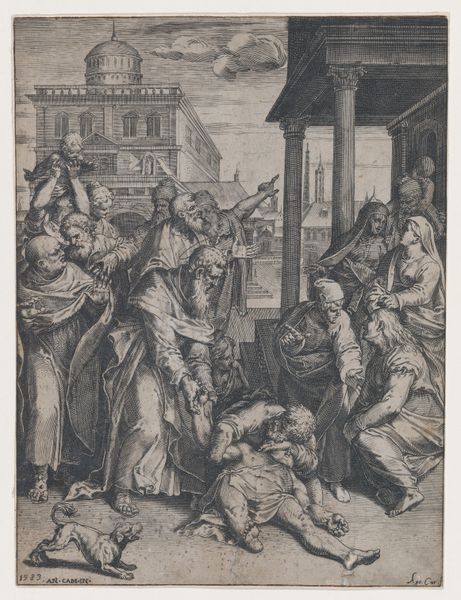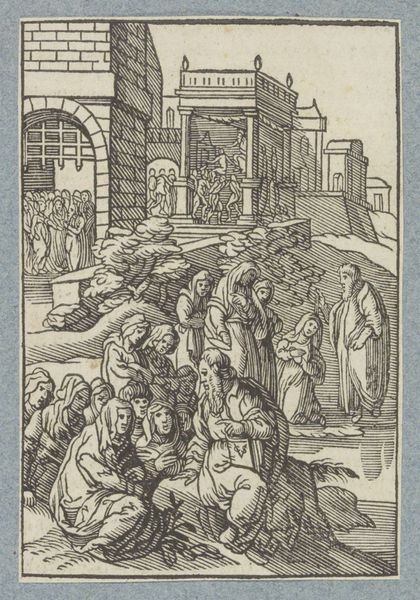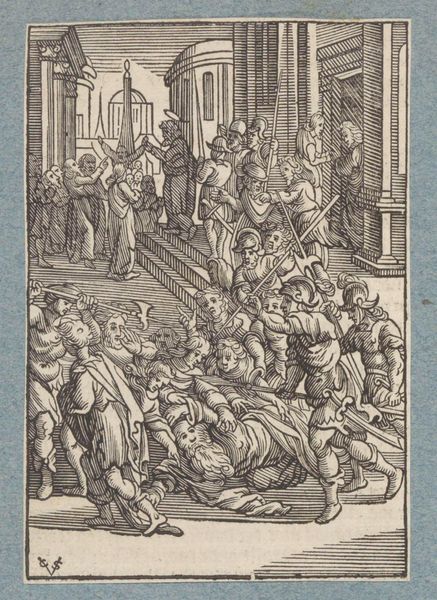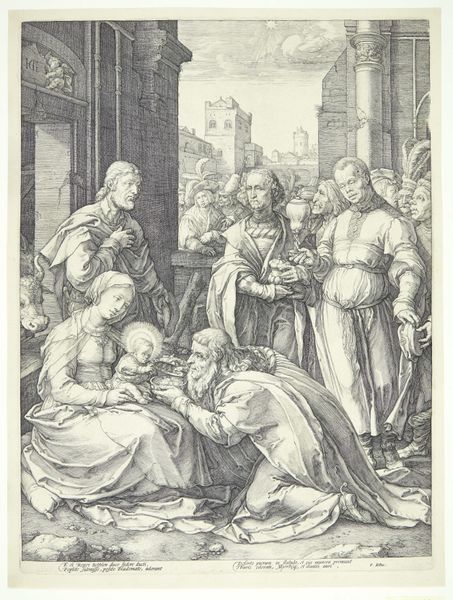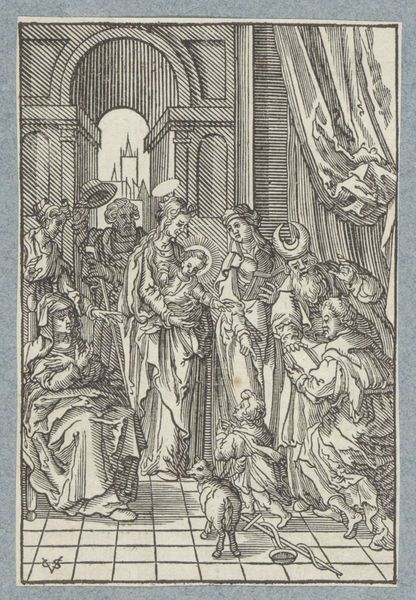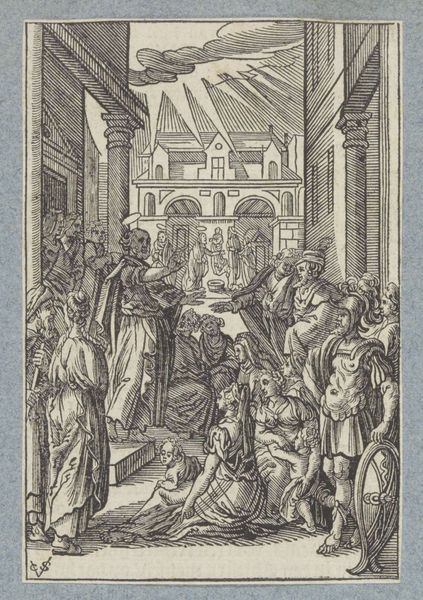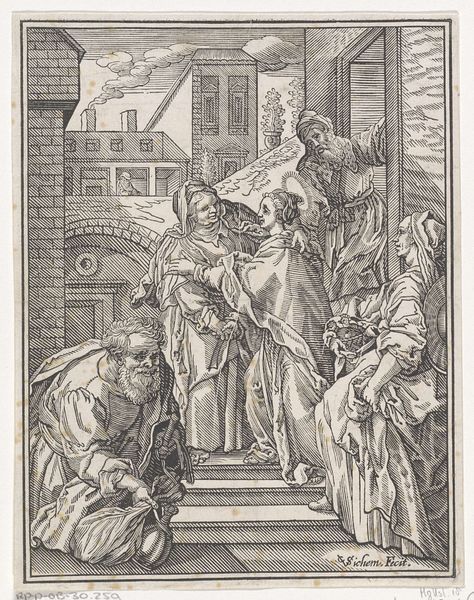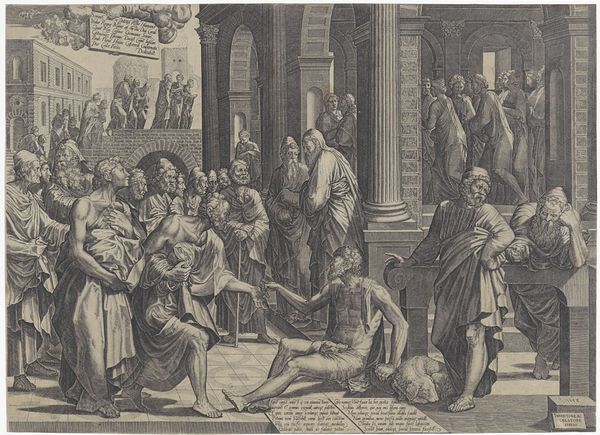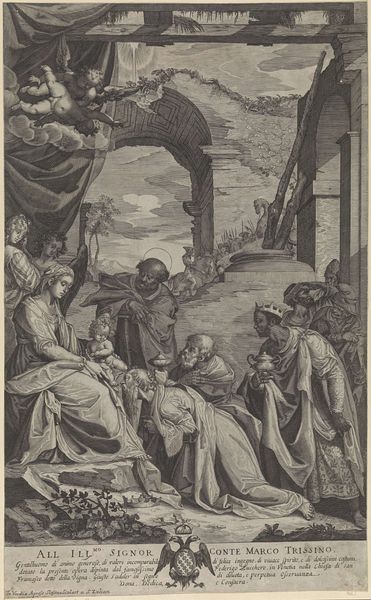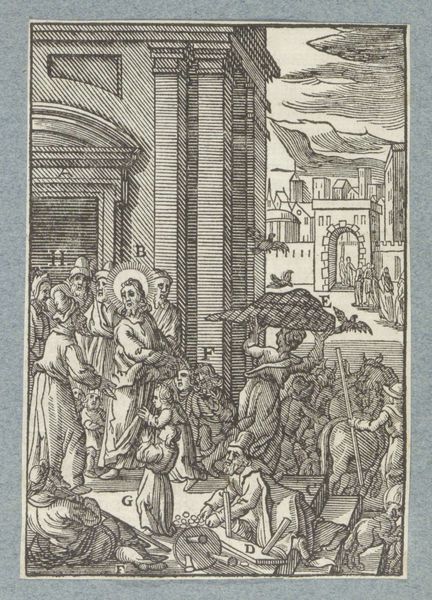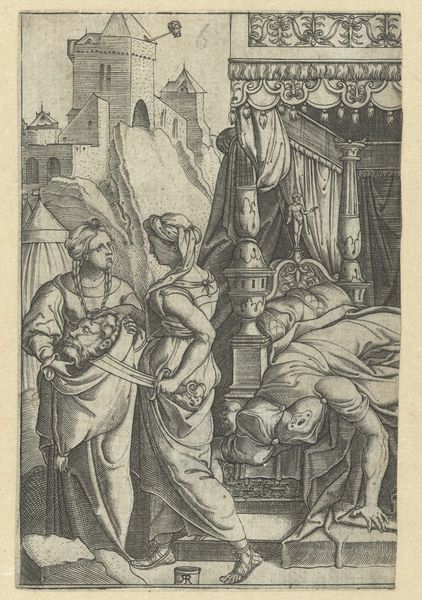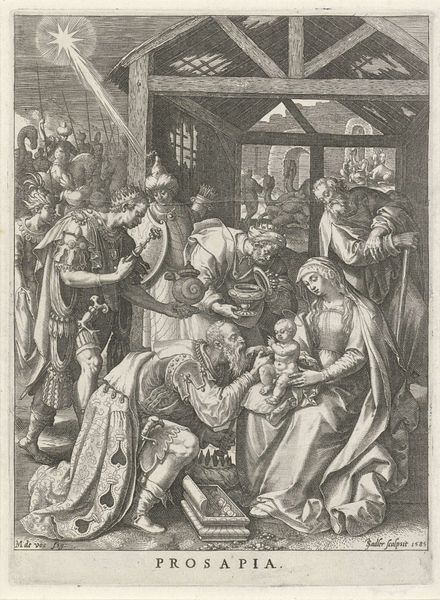
print, engraving
#
portrait
# print
#
landscape
#
figuration
#
line
#
history-painting
#
northern-renaissance
#
engraving
Dimensions: height 191 mm, width 150 mm
Copyright: Rijks Museum: Open Domain
Curator: Let’s discuss this striking print, "The Adoration of the Kings," crafted in 1629 by Christoffel van Sichem II, employing the meticulous technique of engraving. What catches your eye upon first viewing? Editor: The density! Look at how Sichem utilizes the medium—that sheer, exhaustive accumulation of fine lines. It creates this overwhelming sense of texture and almost chaotic activity in what is otherwise a serene religious scene. Curator: Indeed, note how the very act of engraving itself dictates the aesthetic. The line becomes paramount, defining form, space, and even emotion through its variation in thickness and direction. There's a starkness typical of the Northern Renaissance. Editor: Absolutely, the contrast emphasizes the almost laborious aspect of faith, doesn’t it? It’s not a smooth, flowing painting; you see the toil in its making—connecting the devotion depicted to the physical act of its production. These repeated lines form a landscape of faith through craft. Curator: The composition is quite intriguing, adhering to established conventions, yet offering subtle nuances. See how the figures are arranged in a pyramidal form, drawing the eye towards the central figures of Mary and the Christ Child. Editor: But the very flatness of the print medium frustrates any deep perspective. Sichem draws our eye, then denies it real depth! It feels deliberately constrained, reflecting, perhaps, the physical restrictions placed on laborers and their creative freedoms, not unlike Sichem etching lines. Curator: While I agree on the compositional flatness, one cannot ignore the symbolic intent. The starkness enhances the spiritual message, evoking the solemnity of the event and reminding viewers of the importance of piety. The precision reflects an effort toward divine perfection. Editor: Perhaps. But it's this overt contrast – between pious subject and arduous method – that really fascinates me. How faith, both artist’s and figures’, transforms base materials into something valued—almost sacramental in its final state, wouldn’t you agree? Curator: Yes, perhaps our divergent focus enriches appreciation for Van Sichem’s artistic choices. Editor: Ultimately, observing Sichem’s process provides an unusual appreciation of this significant event from religious history.
Comments
No comments
Be the first to comment and join the conversation on the ultimate creative platform.
